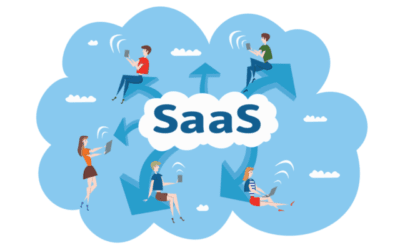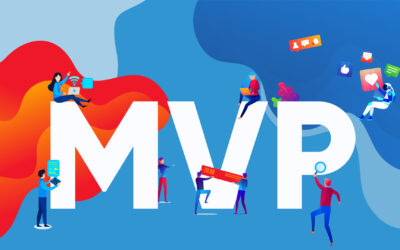The SaaS concept continues to dominate in the cloud technology market. Gartner predicts that the industry will bring more than $140 billion by 2022. It is known that 70% of web applications refer to SaaS. However, only a few are built on the basis of multi-tenant architecture. But experts consider it quite promising due to high investment return, security, quick scaling, easy managing, and maximum use of resources.
How multi-tenant SaaS architecture works
Multi-tenant architecture is a way of remote provision of services for a vast database of users. As Larry Aikenin highlights in his book, this concept can help to build the most successful SaaS. Other analysts support his position and call multi-tenancy the most efficient model.
In SaaS, the multi-tenant architecture contains a common codebase that applies to all the system users. Overall, it enhances the use of the cloud and lowers operational costs instead of the single-user model.

Single-tenant Vs. multi-tenant: what's the difference?
Single-tenant architecture implies providing tenants with individual servers. Accordingly, It increases business flexibility, making it possible to customize and configure the system. In addition, it enhances resource control and the confidentiality of business data. But there are also disadvantages, such as high costs. All expenses associated with management, backups, and updates are borne by the customer.
A multi-client architecture consolidates all the elements and centralizes control with the involvement of the system administrator. There is no need to implement updates on the client side because any changes affect all clients connected to the system. As a result, it simplifies the whole workflow: neither customers nor service providers need to pay attention to disparate applications and spend money on deployment, technical support, and any routine operations.
However, there is a question of data security, but this problem can be solved easily. For each company, the data may be accessible by external keys or be divided into separate work areas, minimizing the risk of leakage. And these are not all the advantages of the model.
Arguments in favor of a multi-tenant SaaS architecture for business
The architecture has the excellent features:
- Multi-level data security, ensured by eliminating vulnerabilities at all system levels.
- Simple maintenance of the infrastructure, which does not require the client to spend on management, updating, or modification.
- High performance, maintained by the service provider, which means that the client does not need to worry about increasing computing power.
- Fault tolerance, continuous data protection, and a unique opportunity for emergency recovery of information.
- Full integration with any third-party apps: both SaaS and on-premises.
- Compliance of the app with all industry standards and regulations.
- Improved scalability, ensured by transferring the app to a large server and deploying new nodes as the data volume expands and the number of transactions increases.
One of the most important advantages is the comprehensive functionality: managing orders, personnel, customers, resources, materials, and assortment, including through the mobile version. For example, Kitchen Space, a software solution for rental kitchens developed by General Soft. The peculiarity of this project is availability for all companies at any time: just create an account and add an order form to the site.

3 excellent examples of services with multi-tenant architecture
- Gmail: a Google service that gives millions of users free access to mailboxes.
- Dropbox: a service for storing data on remote servers and guarantees its security.
- Salesforce: a CRM system to which customers connect on an ongoing basis at any time and from different devices.
This list of famous providers includes many other multi-tenant architecture examples as well: Google Apps, Mailchimp, HubSpot, Zendesk, and more. As a result, all parties benefit: business customers may run complex corporate programs and extensive databases with minimal costs, and the suppliers may centrally manage the entire system without wasting time and effort on disparate versions. As a result, it helps to maximize profits.






